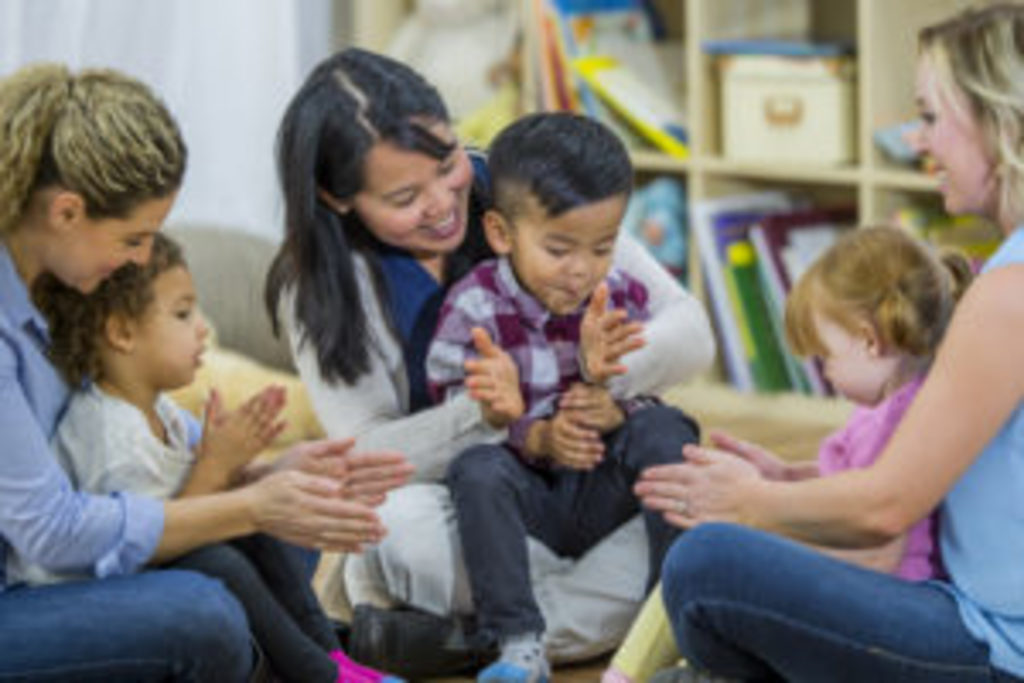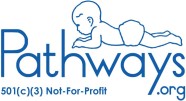Get Your Toddler Talking: 5 Ways to Add Communication to Your Daily Routine

The best thing you can do to boost your child’s language skills? Talk to them, read to them, sing to them, play with them! The more time you spend communicating with your child, the better. Why? From the time they’re born, kids start to develop two types of communication skills: receptive and expressive.
Receptive skills are what your child takes in (hearing and understanding).
Expressive skills are what your child puts out (sounds, gestures, and speech).
clapping-and-singing-songsEven before baby can talk, they develop communication skills by listening to what’s going on around them. As kids get older and become more vocal, you’ll start having two-way conversations. That means more chances to sneak in receptive and expressive communication practice whenever you can.
Here are a few easy ways to add language play into your daily routine. No extra activities required!
Getting Dressed
boy_buttoning_shirtGetting dressed is a great time to help preschool- and kindergarten-aged children practice their language skills. It also helps them learn how to follow directions and organize everyday tasks. For example, they’ll learn to put a T-shirt on before their sweater and put a sweater on before their coat.
Practice receptive language skills by asking your child, “Can you go get your socks?” and telling them, “Go get your shirt.” See if they understand and remember what you’re asking. Work on expressive language by talking about their clothing. Ask your child to describe the color of their shirt.
You can also ask them to group their clothes into categories or talk about the other things they might need to wear today. When it’s cold outside, ask them what they need to wear along with their jacket — hat, scarf, gloves, etc.
Helping with Meal Time
Children can improve executive function skills (memory, self-control, and flexibility) and receptive language skills by helping set the table. Give them specific tasks and see if they can follow each of your directions.
family of four having dinner togetherTo engage their expressive language, ask your child to describe what they’re doing and how they use each item. For example, ask, “What food can we eat with a spoon?” Make sure to keep a close eye on them, help them with heavier items (plates, empty drinking glasses), and keep sharp objects (forks, knives) out of reach.
Toddlers can also help you cook. Encourage your child to use expressive language to explain what they’re doing (pouring, stirring), and then ask them to retell the steps they took to make the meal. For example, if you make a cake, your kid can explain that first they made the batter, then they placed the batter in a dish, then dad placed the dish in the oven, and now it’s ready to eat.
Ask your child to help with one meal a day — breakfast, lunch, dinner, snack time — whichever is least stressful for you to make.
Cleaning up Toys
Cleanup time teaches children how to follow directions and take turns. To practice turn-taking, tell your child to put away two or three specific toys and ask them which two or three toys you should put away. Purposely grab the “wrong” toy and let your child correct you. This targets their memory and expressive language skills.
Want to take it to the next level? Use cleanup time to teach kids prepositional phrases. For example, ask your child to “Put the book on the shelf” and have them repeat the phrase.
young girl with pigtails brushing her teethBrushing Teeth
Activities that follow a specific order, like brushing your teeth, help improve language skills, because children can retell details of the event one-by-one. Start by talking kids through everything they do to brush their teeth, from getting the toothpaste out to putting the toothbrush away. When they’re done brushing, ask them to tell you — in order — what they did.
Bath Time
Use bath time to help your child learn how to follow directions. Ask them to wash in a certain order — e.g. start with their arms, then belly, then legs. See if they can remember the order on their own. This is a great time to help your child learn about different body parts and explain what they do — i.e. ears are used for listening.

Πρόσφατα Άρθρα
Splish, Splash, the Benefits of Water Play for Children
Independent Play can Boost Confidence, Creativity, and So Much More
